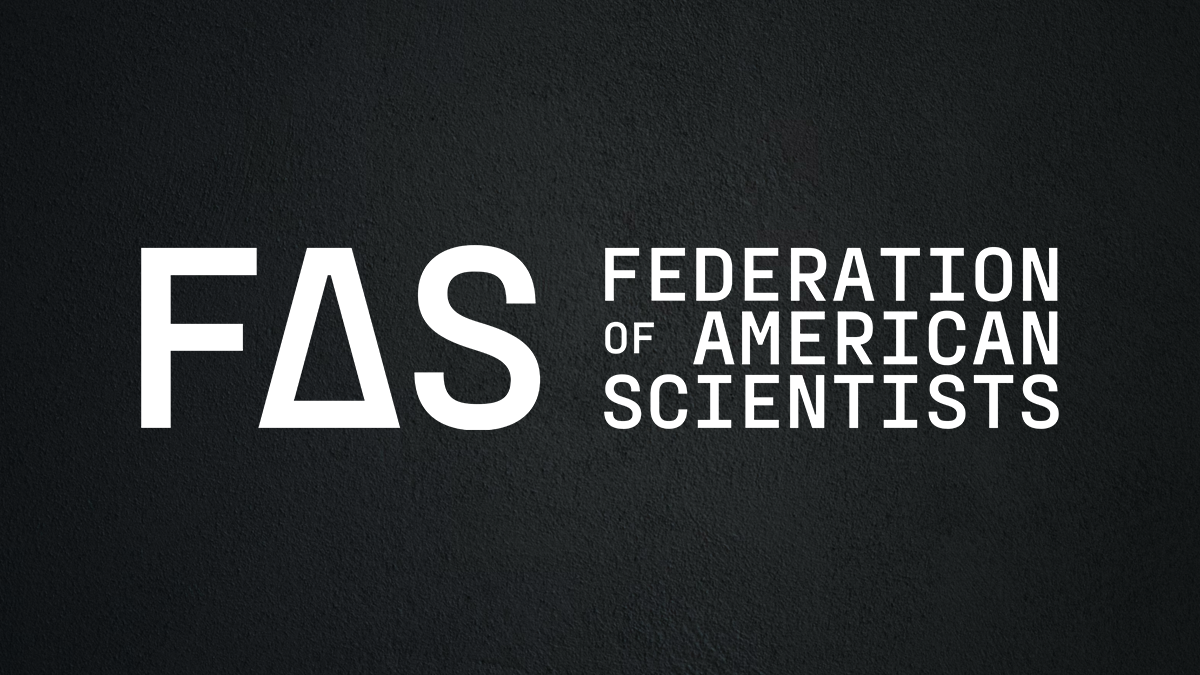
FAS Receives $500k Grant On Emerging Disruptive Technologies and Mobile Nuclear Launch Systems
The Carnegie Corporation of New York grant funds research in partnership with The British American Security Information Council (BASIC) on the destabilizing impacts of emerging and disruptive technologies on mobile nuclear launch platforms.
Washington, D.C. – November 6, 2025 – The Federation of American Scientists (FAS) has received a $500,000 grant to analyze the capabilities of emerging and disruptive technologies (EDTs) to track and trail mobile nuclear launch platforms—particularly land-based mobile missile forces and sea-based systems. The grant comes from the Carnegie Corporation of New York (CCNY) to investigate, alongside The British American Security Information Council (BASIC), the associated impact on nuclear stability.
The grant funds a two-year project to support FAS’ and BASIC’s joint effort to research current EDT capabilities and potential future applications in order to supply experts and policymakers with data to recommend short- and medium-term risk reduction measures. Additionally, the grant enables FAS and BASIC to bring together an interdisciplinary community of scientific, technical, and open-source intelligence (OSINT) experts.
“We are excited to partner with BASIC on this project and grateful to CCNY for the opportunity,” said Mackenzie Knight-Boyle, Senior Research Associate on the Nuclear Information Project at FAS and co-lead of the project. “As OSINT analysts, it’s important that we are aware of what new tools and capabilities are out there for tracking nuclear forces. It is essential, however, that we are responsible practitioners with a thorough understanding of the implications for nuclear stability if such technologies threaten the traditional survivability of mobile systems.”
The project scope will include desk-based research, workshops with leading experts and practitioners, briefings with stakeholders, and publications. The conclusion of the grant will result in educational events about the findings across nuclear and non-nuclear weapon states, with the objective to reduce nuclear risk.
“BASIC is delighted to be partnering with FAS to investigate the impacts of the cutting-edge emerging and disruptive technologies on the stealth of land- and sea-based mobile nuclear delivery platforms,” writes BASIC Executive Director Sebastian Brixey-Williams. “If such platforms can be detected – whether allied or adversary owned – nuclear stability may be significantly compromised. It is therefore essential that nuclear planners are equipped with robust and clear-eyed assessments of potential risks and recommendations on mitigation measures.”
The impact of “near-term” EDTs (defined as those that are currently in development or expected to develop over the next 5-10 years) is a topic BASIC has reported extensively.
“This work lies at the critical intersection between technology and policy. By strengthening a community of experts who understand these technologies and their associated risks, we can more effectively inform and engage the public and policymakers on nuclear dangers and strategic stability challenges,” said Eliana Johns, Senior Research Associate with the Nuclear Information Project at FAS and co-lead of the project.
###
ABOUT FAS
The Federation of American Scientists (FAS) works to advance progress on a broad suite of contemporary issues where science, technology, and innovation policy can deliver transformative impact, and seeks to ensure that scientific and technical expertise have a seat at the policymaking table. Established eighty years ago by scientists in response to the atomic bomb, FAS continues to bring scientific rigor and analysis to address national challenges. More information about FAS work at fas.org.
The grant comes from the Carnegie Corporation of New York (CCNY) to investigate, alongside The British American Security Information Council (BASIC), the associated impact on nuclear stability.
Satellite imagery of RAF Lakenheath reveals new construction of a security perimeter around ten protective aircraft shelters in the designated nuclear area, the latest measure in a series of upgrades as the base prepares for the ability to store U.S. nuclear weapons.
It will take consistent leadership and action to navigate the complex dangers in the region and to avoid what many analysts considered to be an increasingly possible outcome, a nuclear conflict in East Asia.
How the United States responds to China’s nuclear buildup will shape the global nuclear balance for the rest of the century.